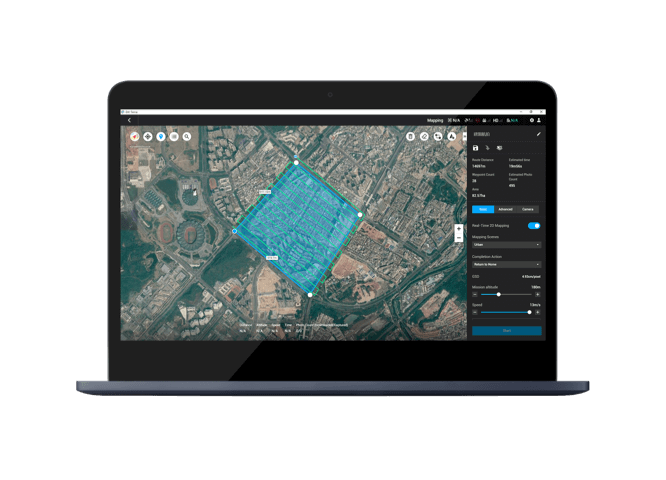In most cases, your activation code will be delivered within 2–5 business days.
DJI Terra V5.0
Next-Level Modeling with 3D Gaussian Splatting
At the heart of the DJI Terra update is the 3D Gaussian Splatting—a powerful new reconstruction algorithm that redefines the way photogrammetry models are created. Unlike traditional oblique photogrammetry, Gaussian Splatting produces photo-realistic 3D models that faithfully represent complex environments, including transparent structures, fine architectural details, reflective surfaces, and vegetation. This technique delivers distortion-free orthomosaics and a natural rendering style, making it ideal for documenting cultural heritage, urban areas, scenic landscapes, and architectural assets.
Crucially, this technology isn’t just about aesthetics—it’s about performance. With the ability to process around 500 photos per hour, DJI Terra V5.0 can model large scenes (10,000 photos) in half the time compared to previous versions. The result: faster turnarounds for large-scale reconstruction projects.
City-Scale Modeling: Precision Meets Performance
DJI Terra now empowers users to perform city-scale 3D modeling with unmatched efficiency. Leveraging Gaussian Splatting and optimized memory utilization, the software can process 300–400 photos per 1 GB of RAM—supporting datasets of up to 30,000 images per modeling task. Whether capturing an entire city district, an industrial park, or a sprawling infrastructure network, DJI Terra delivers the scale and accuracy needed for urban digitalization and smart city planning.
Impressively, this level of performance is now accessible on entry-level hardware. With only 4 GB GPU memory and 32 GB RAM, professionals can execute high-quality modeling tasks without investing in high-performance computing systems—expanding access to advanced 3D workflows.
Universal Compatibility and Output Formats
To ensure seamless integration with industry ecosystems, DJI Terra supports one-click export to standardized 3D formats such as PLY and B3DM (3D Tiles). These outputs are ready for use across surveying, mapping, gaming, and film production environments, making Terra a highly versatile platform for spatial data processing and visual applications.
Real-Time Processing for Fast-Paced Projects
Speed and efficiency are hallmarks of the DJI Terra software. For small projects, real-time on-site results are now possible. For larger-scale jobs, DJI Terra supports cluster processing, reducing modeling time dramatically. For example:
-
2D Reconstruction: 5,000 photos processed in under 2 hours (standalone) or 80 minutes (cluster reconstruction).
-
3D Modeling: 30,000 photos processed in 3 days using cluster mode.
Such capabilities make DJI Terra an optimal choice for industries with high-frequency data collection needs and urgent delivery schedules, such as emergency response, construction, and infrastructure monitoring.
LiDAR Reconstruction and Fusion Modeling
DJI Terra V5.0 supports 2D–3D fusion modeling by integrating LiDAR and visible light data. A single acquisition using Zenmuse LiDAR can produce point clouds, 2D maps, and 3D mesh models, increasing model completeness—especially in structurally complex areas such as bridges and substations.
Leveraging RTK and PPK, Terra delivers centimeter-level accuracy for LiDAR point clouds without requiring ground control points. The software supports the automatic generation of waypoints and flight routes based on local 3D reality models or third-party point clouds. Users can visualize simulated camera views for precise waypoint selection and automated inspection planning.
Multispectral Modeling for Agriculture
In agriculture, DJI Terra continues to shine with robust support for multispectral imagery from DJI Mavic 3 Multispectral and Phantom 4 Multispectral. Users can generate vegetation index maps (NDVI, NDRE) and reflectance maps for plant health analysis.
More importantly, DJI Terra now facilitates variable-rate prescription mapping, allowing users to create crop-specific treatment plans (for field crops or fruit trees) and export them directly to DJI Agras drones. This end-to-end integration streamlines precision farming, maximizing yield while minimizing input costs.
Specifications















































